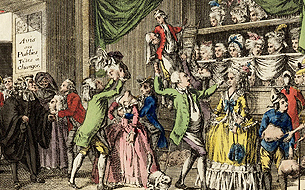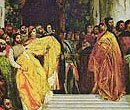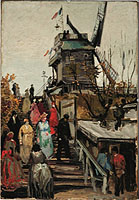X
Please wait for the PDF.
The browser will either open the file, download it, or display a dialog.
The browser will either open the file, download it, or display a dialog.
Arriving in London in 1802, Madame Tussaud's waxworks show presented visitors with a viscerally engaging fantasy of trauma in the form of her "Chamber of Horrors," a singular collection of deathly figures drawn from the annals of the French Revolution. This essay considers the specific rhetorical and aesthetic modes that developed as Tussaud increasingly commodified not only contemporary history and society, but also individualized experiences of violence.
Analysis of a lavish lithographic album documenting an 1837 expedition to the Crimea untangles multiple strands of signification in a particularly intriguing case of cross-cultural representation. Attention to the voices that speak through its images and to the complex meanings they may have produced in the midst of Russian annexations on the Black Sea and French incursions in Algeria exposes contradictory messages about civilized centers and exotic peripheries. The artistic legacy of this Russian-sponsored and French-staffed voyage inflects received models of "orientalist" representation for application to extra-European contexts and hybrid cases where self and other interwine.
When James McNeill Whistler's La Princesse du pays de la porcelaine was exhibited at the Paris Salon of 1865, many critics reacted unfavorably to its implied collapsing of the distinction between an oil portrait and the designs on East Asian porcelain. This article explores how, in the conception and execution of La Princesse, Whistler drew on the uncanny allure of Japanese and Chinese objects for Victorian viewers to facilitate his Aestheticist aim of locating pictorial meaning in the visual itself.
Working in much the same way as an archaeologist, Frederic Leighton (President of the Royal Academy 1878–96) unearthed, reassembled and reanimated the classical male body in his painting, And the sea gave up the dead which were in it. The painting's subject—the gathering together of the dissolved fragments of the dead into a perfected re-embodiment on the Day of Judgment—acts as a powerful metaphor for Leighton's laborious working method of dismantling and then reconstructing bodies in the act of piecing together ideal form.
(Publication of this article was made possible by a generous grant from the Samuel H. Kress Foundation)
Delacroix's Execution of the Doge Marino Faliero (1826) was the subject of reviews by the painter's political allies Auguste Jal and Ludovic Vitet, which bordered on the openly hostile; Delacroix had conjured up a vision of Charles X's recent pompous, theatrical Sacre in this depiction of an equally theatrical Medieval execution ritual, known from Byron's tragedy Marino Faliero. Delacroix's irreverent, menacing blend, realized with the help of excessive theatre and color effect, was seen by both critics to undermine the elevating character of history painting, which they defended even while sharing Delacroix's anti-royalist feelings.
Delacroix's Execution of the Doge Marino Faliero (1826) was the subject of reviews by the painter's political allies Auguste Jal and Ludovic Vitet, which bordered on the openly hostile; Delacroix had conjured up a vision of Charles X's recent pompous, theatrical Sacre in this depiction of an equally theatrical Medieval execution ritual, known from Byron's tragedy Marino Faliero. Delacroix's irreverent, menacing blend, realized with the help of excessive theatre and color effect, was seen by both critics to undermine the elevating character of history painting, which they defended even while sharing Delacroix's anti-royalist feelings.
For the first time, Nineteenth-Century Art Worldwide publishes a response to an article from a past issue...







